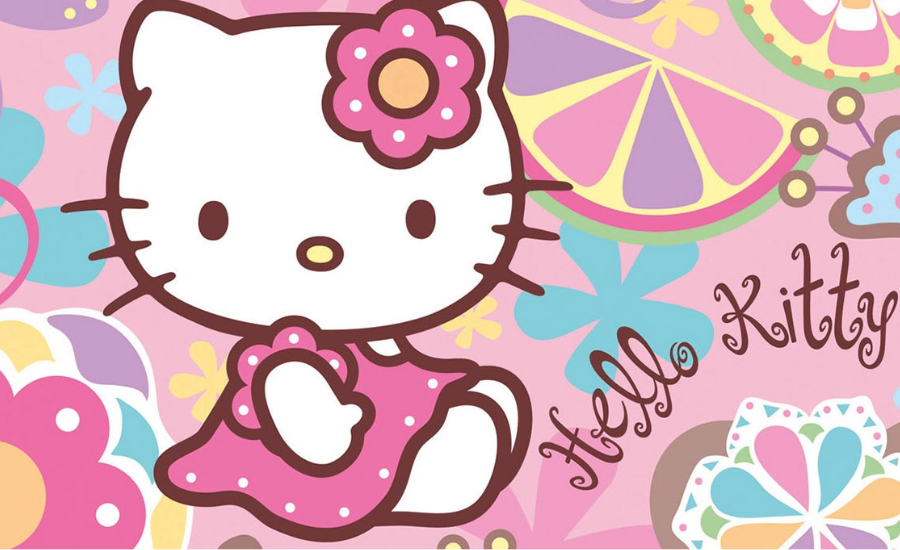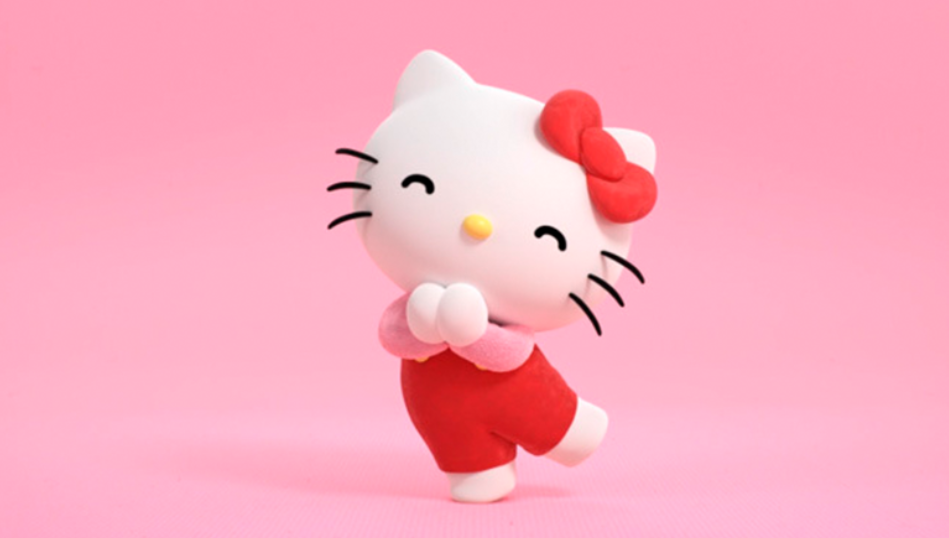Hello Kitty, a character created by Sanrio in 1974, is more than just a cute cat with a bow. Over the years, Pink:Cmxa0qcysjw= Hello Kitty has transformed from a small design on a coin purse into an international cultural icon, beloved by millions worldwide. One of the defining aspects of Hello Kitty’s brand identity is its deep association with the color pink.
Pink, often seen as a symbol of innocence, femininity, and warmth, has played a significant role in shaping the brand’s image. From fashion to stationery, the color pink has become synonymous with Hello Kitty, making it an integral part of her global appeal.
What is Pink:Cmxa0qcysjw= Hello Kitty
It seems like “Pink:Cmxa0qcysjw= Hello Kitty” might be a specific term, code, or reference that isn’t widely recognized. As of my latest information, there is no known concept or official product called “Pink:Cmxa0qcysjw= Hello Kitty.” It could potentially be a custom or internal label, a placeholder, or even a technical glitch.
Why Choose Pink:Cmxa0qcysjw= Hello Kitty

Iconic Branding
Pink has always been a significant part of Hello Kitty’s visual identity, representing cuteness, innocence, and femininity. The color pink, along with Hello Kitty’s bow and simple, charming design, has become iconic, making pink-themed Hello Kitty products instantly recognizable.
Symbol of Kawaii Culture
Hello Kitty is a symbol of Japanese kawaii (cute) culture, and pink is a central color in this aesthetic. Choosing Hello Kitty in pink connects people to a broader cultural trend that celebrates charm, playfulness, and childlike joy.
Emotional Appeal
Pink is often associated with warmth, calmness, and comfort. Products featuring Hello Kitty in pink may appeal to people who are drawn to these positive emotions. Pink Hello Kitty items tend to feel inviting and soothing, enhancing the character’s nostalgic charm.
Fashion and Personal Style
Hello Kitty’s collaborations with major fashion brands often involve pink as a prominent color. Pink-themed Hello Kitty items—like bags, clothing, and accessories—allow fans to incorporate playful and nostalgic elements into their personal style while keeping things chic.
Universal Appeal
Hello Kitty transcends age and culture, and pink is a color that resonates across various demographics. Choosing a pink Hello Kitty product might appeal to children, teenagers, and adults alike, providing a sense of continuity across generations.
Wide Range of Products
Pink Hello Kitty-themed items are available in a vast range of products, from fashion to stationery, home decor, and even tech gadgets. The sheer variety of pink Hello Kitty merchandise makes it easy for fans to find something that fits their tastes and preferences.
The Color Pink: Symbolism and Cultural Significance
Pink is a color that evokes specific emotions and ideas—warmth, softness, and nostalgia. In Hello Kitty’s case, pink has become a cornerstone in establishing her identity as a gentle and approachable figure. In both Japanese and Western contexts, pink often symbolizes femininity, innocence, and charm, aligning perfectly with Hello Kitty’s sweet and friendly image.
In Japanese culture, kawaii is not just about looking cute; it’s also about embracing vulnerability and a sense of harmlessness. The color pink, in this sense, amplifies these qualities in Hello Kitty. It’s a soft, nurturing color that makes the character feel approachable to both children and adults. Over time, the combination of pink and Hello Kitty has evolved into more than just a style choice; it has become an emotional connection for fans who associate the character with positive feelings of nostalgia and joy.
Hello Kitty’s Impact on Fashion and Branding
As Hello Kitty’s popularity grew, so did her influence on fashion. The character’s branding extended far beyond toys and accessories for young girls. By the 1980s and 1990s, Hello Kitty had become a major player in the fashion world, with her image and the color pink being used in collaborations with brands like Nike, Sephora, and even high-end designers like Balenciaga and Coach.
Pink became the go-to color for Hello Kitty-themed products, from apparel to makeup lines. The association with Hello Kitty allowed brands to leverage her charm to appeal to customers looking for both nostalgia and style. For example, pink Hello Kitty sneakers and handbags became statement pieces that merged cute with chic, embodying a playful yet fashionable spirit.
In Japan, the pink Hello Kitty aesthetic played a significant role in shaping the broader kawaii fashion movement. Young women and teenagers began embracing pastel colors, especially pink, as part of their daily wear, often accessorizing with Hello Kitty-themed items. Over time, Hello Kitty’s influence spread to global fashion, with designers incorporating the character into their collections, making pink an even stronger component of Hello Kitty’s brand identity.
Hello Kitty as a Cultural Icon
As Hello Kitty’s brand matured, she became more than just a children’s character. Adults began to embrace Hello Kitty, seeing her not only as a nostalgic figure from their childhood but also as a symbol of cuteness that transcended age. Hello, Kitty’s subtle expressionless face became a canvas onto which people could project their emotions, and pink helped maintain that aura of innocence and joy.
Pink is also used strategically in Hello Kitty products aimed at adults. The soft pastel tones are often found in high-end collaborations, cosmetics, and home décor, showing how Hello Kitty has managed to stay relevant to different age groups. By tapping into adult markets with sophisticated, minimalistic pink designs, Hello Kitty kept her allure while evolving alongside her fanbase.
The Global Appeal of Hello Kitty
Hello Kitty’s appeal extends far beyond Japan. She has become a global icon, and her use of pink is a large part of her universal allure. In Western cultures, the color pink carries similar connotations of femininity, sweetness, and care, which resonate with Hello Kitty’s image. Celebrities such as Mariah Carey, Lady Gaga, and Katy Perry have publicly expressed their love for Hello Kitty, often incorporating the character’s iconic pink color into their fashion and media appearances.
The global reach of Hello Kitty can be seen in her collaborations with international brands, which often emphasize pink as the color that links the character to consumers across different cultures. Whether it’s a line of cosmetics in America or a fashion collaboration in Europe, Hello Kitty’s signature pink makes her instantly recognizable.
The Evolution of Hello Kitty’s Design
Throughout the years, Hello Kitty’s design has gone through subtle changes, but pink has remained a constant. Initially, Hello Kitty wore a red bow and had a more straightforward aesthetic. Still, as the character grew in popularity, Sanrio introduced more variations of her appearance, often incorporating different shades of pink.
Newer iterations of Hello Kitty have seen her in various outfits, many of which are entirely pink. These designs target specific demographics, such as young adults who grew up with Hello Kitty and still enjoy incorporating her into their wardrobe and lifestyle. Despite these changes, the core use of pink has remained a central feature, keeping Hello Kitty consistent with her original brand while allowing for modern reinterpretations.
Hello Kitty in Art and High Fashion
Hello Kitty has even found a place in the world of high art and fashion, where she is often used as a symbol of consumerism, nostalgia, and the commodification of cuteness. In these contexts, pink becomes a powerful visual tool. For example, artist Takashi Murakami has incorporated Hello Kitty into his works, using the character’s pink color palette to explore themes of commercialism in contemporary art.
Similarly, high fashion designers like Yohji Yamamoto and Anna Sui have collaborated with Sanrio to create Hello Kitty-themed collections that play with the color pink in innovative ways. These collaborations elevate Hello Kitty from a commercial character to a pop culture icon, one that is both accessible and high-fashion.
Frequently Asked Questions
What is Hello Kitty?
Hello Kitty is a fictional character created by the Japanese company Sanrio in 1974. She is depicted as a cute white cat with a red bow and no visible mouth. Hello Kitty has become an iconic figure in popular culture, especially within the kawaii aesthetic.
Why is pink associated with Hello Kitty?
Pink has become a defining color for Hello Kitty, symbolizing femininity, innocence, and cuteness. The use of pink in her branding appeals to a broad audience and reinforces the character’s playful and charming image.
What does Hello Kitty symbolize?
Hello Kitty symbolizes cuteness, friendship, and childhood nostalgia. She is often seen as a representation of kawaii culture in Japan, embodying innocence and playfulness.
How has Hello Kitty influenced fashion?
Hello Kitty has collaborated with various fashion brands and designers, making her a staple in the fashion industry. Her pink-themed products range from clothing to accessories, appealing to both children and adults and influencing trends in Kawaii fashion.
Is Hello Kitty just for children?
No, Hello Kitty has a broad appeal that transcends age. Many adults enjoy Hello Kitty products for their nostalgic value and aesthetic appeal. The character is featured in items aimed at various demographics, including home decor, fashion, and collectibles.
What types of products feature Hello Kitty?
Hello Kitty merchandise includes a wide range of products such as toys, clothing, accessories, stationery, cosmetics, and home decor. Many of these items prominently feature the color pink, reinforcing her cute and playful image.
Conclusion
Hello Kitty has evolved from a simple character into a global icon, with the color pink at the heart of her charm. This connection to pink embodies innocence and playfulness, making her a symbol of kawaii culture that resonates across generations. Her influence spans fashion, art, and pop culture, showcasing her versatility and enduring appeal.
As Hello Kitty continues to adapt while retaining her core identity, the use of pink remains a key element of her brand. Choosing Pink Hello Kitty products is not just about embracing cuteness; it’s about connecting to a joyful cultural heritage that celebrates nostalgia and creativity. With her iconic status solidified, Hello Kitty will undoubtedly continue to inspire and bring smiles for years to come.

